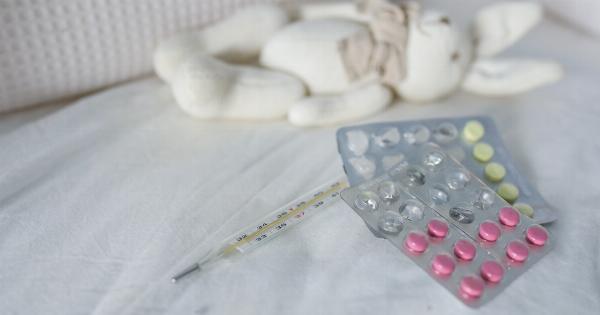Stretch marks are a common cosmetic concern that affects many individuals. They often occur as a result of rapid stretching of the skin, which can lead to the appearance of thin, indented streaks or lines on the body.
While they pose no health risks, stretch marks can cause self-consciousness and affect a person’s self-esteem. This article explores the development of stretch marks, including the causes, prevention methods, and treatment options.
What Are Stretch Marks?
Stretch marks, medically known as striae distensae, are a form of scarring that affects the dermis – the middle layer of the skin. They typically appear as parallel streaks, often with an off-color hue, such as reddish, pinkish, or purplish.
Over time, stretch marks may fade and become less noticeable, but they do not completely disappear on their own.
Causes of Stretch Marks
Stretch marks can develop due to various factors:.
1. Pregnancy
One of the most common causes of stretch marks is pregnancy. As the belly expands to accommodate the growing fetus, the skin undergoes significant stretching.
This stretching can lead to the development of stretch marks, often around the abdomen, breasts, hips, and thighs.
2. Rapid Weight Gain or Loss
Individuals who experience rapid weight gain or loss may also be prone to stretch marks. When the skin is stretched or shrinks too quickly, the normal production of collagen – a protein that provides skin elasticity – may be disrupted.
This can result in the appearance of stretch marks in areas such as the arms, legs, abdomen, and buttocks.
3. Puberty
During puberty, the body goes through significant growth and changes. The rapid growth spurts experienced during this time can cause stretch marks to develop in teenagers, especially on areas like the hips, breasts, thighs, and buttocks.
4. Hormonal Changes
Hormonal changes, such as those that occur during puberty, pregnancy, or with certain medical conditions, can also contribute to the development of stretch marks.
Hormones impact the skin’s elasticity, and a sudden increase or decrease in hormone levels can affect collagen production and lead to the formation of stretch marks.
5. Corticosteroid Use
Prolonged use of corticosteroid medications can weaken the skin’s collagen fibers, making it more susceptible to stretch marks.
This includes both topical creams and oral corticosteroids used to treat various medical conditions, such as asthma, arthritis, and certain skin conditions.
Prevention Methods for Stretch Marks
While it may not be possible to prevent stretch marks entirely, certain measures can reduce their likelihood or minimize their appearance:.
1. Maintain a Healthy Weight
Maintaining a healthy weight can help minimize the risk of stretch marks associated with weight fluctuations.
Gradual weight gain or loss is generally preferred to sudden changes, as it allows the skin to adjust more gradually to the body’s new shape.
2. Hydration
Ensuring adequate hydration by drinking plenty of water helps keep the skin hydrated and maintains its elasticity. Well-hydrated skin is generally more resilient and less prone to developing stretch marks.
3. Balanced Diet
A well-balanced diet rich in vitamins and minerals can promote skin health and elasticity.
Nutrients like vitamin E, vitamin C, zinc, and silica can support the production of collagen, thereby maintaining skin strength and reducing the chance of stretch marks.
4. Skincare Routine
Regularly moisturizing the skin with creams, oils, or lotions can help keep it supple and may reduce the appearance of stretch marks. Massaging the skin during application can also improve blood circulation and promote skin elasticity.
Treatment Options for Stretch Marks
While stretch marks cannot be completely erased, there are treatment options available to help improve their appearance:.
1. Topical Creams and Oils
Over-the-counter creams and oils containing ingredients such as retinol, hyaluronic acid, or glycolic acid may help improve the appearance of stretch marks.
Although these products may not eliminate stretch marks entirely, they can fade their color and improve skin texture.
2. Medical Procedures
Various medical procedures, such as laser therapy, microdermabrasion, or chemical peels, can help stimulate collagen production and reduce the appearance of stretch marks.
These treatments should be performed by trained professionals and often require multiple sessions for optimal results.
3. Body Makeup and Camouflage
Camouflaging stretch marks with body makeup or self-tanners can provide temporary cosmetic coverage.
These techniques can help even out the skin tone and make stretch marks less noticeable, particularly when wearing clothing that exposes the affected areas.
Conclusion
Stretch marks are a common skin concern that can affect individuals of all genders and ages. While they do not pose health risks, stretch marks can impact an individual’s self-confidence.
Understanding the causes and prevention methods can help minimize the likelihood of their development. Additionally, various treatment options are available to improve their appearance.
If stretch marks significantly affect your self-esteem or cause distress, consulting a dermatologist or healthcare professional can provide personalized advice and guidance.






























